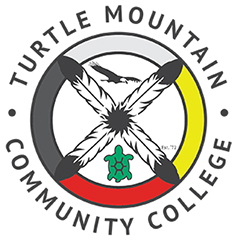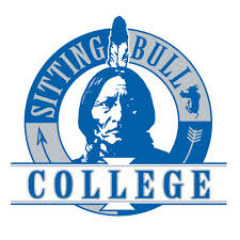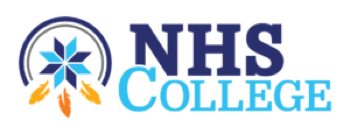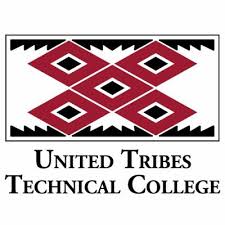Tribal leaders in action
All five presidents of tribal colleges in North Dakota are UND Ph.D.’s

One of the things the presidents of the five Tribal Colleges in North Dakota have in common is their educational background. All five presidents graduated from the University of North Dakota, where they earned their doctoral degrees.
In fact, all of the presidents earned their bachelor’s degrees at UND as well. And with the exception of Cynthia Lindquist, who helms Cankdeska Cikana Community College in Fort Totten, N.D., and obtained her master’s degree from the University of South Dakota, the presidents are holders of UND master’s degrees.
 These educational parallels emerged in September when Donna Brown became president of Turtle Mountain Community College in Belcourt, N.D. Brown replaced Jim Davis, who went to Dickinson State University for his undergraduate work and got his graduate degrees at Penn State.
These educational parallels emerged in September when Donna Brown became president of Turtle Mountain Community College in Belcourt, N.D. Brown replaced Jim Davis, who went to Dickinson State University for his undergraduate work and got his graduate degrees at Penn State.
To learn more about the presidents’ experiences and views of their alma mater, UND Today caught up with the leaders during a recent virtual meeting of the North Dakota Association of Tribal Colleges. The conversation below has been edited for length and clarity.
UND Today: All five of you hold multiple degrees from UND. What kept you going back to the University?
Donna Brown (’91, ’95, ’02): What kept me going back was the staff at the American Indian Student Services. They were supportive throughout my time there. I got my start in college at the tribal colleges, particularly the one that I’m at now – Turtle Mountain. I started taking classes here and I was successful, and that’s the only way I made it to UND in the first place.
 Laurel Vermillion (’80, ’95, ’05), Sitting Bull College, Fort Yates, N.D.: For me, it was availability. For my bachelor’s degree, it was an agreement between Standing Rock Community College (now Sitting Bull) at that time and UND. I got into a cohort program for teacher education. I was a teacher’s aide at Standing Rock Elementary School in Fort Yates, ND. I was really encouraged by a mentor of mine, Dr. Jack Barden (one of the founders of Standing Rock Community College), who, I think, helped to put this cohort together for teacher education. He really encouraged me to participate. So that’s how I got into that program and got my teaching degree.
Laurel Vermillion (’80, ’95, ’05), Sitting Bull College, Fort Yates, N.D.: For me, it was availability. For my bachelor’s degree, it was an agreement between Standing Rock Community College (now Sitting Bull) at that time and UND. I got into a cohort program for teacher education. I was a teacher’s aide at Standing Rock Elementary School in Fort Yates, ND. I was really encouraged by a mentor of mine, Dr. Jack Barden (one of the founders of Standing Rock Community College), who, I think, helped to put this cohort together for teacher education. He really encouraged me to participate. So that’s how I got into that program and got my teaching degree.
I went back because of another cohort opportunity through UND that was available to other North Dakota Tribal College (TCU) students, thus I was able to pursue this degree with cohort participants from other North Dakota Reservations. We pursued and obtained a master’s degree in Education Administration.
The last one, as well, was a cohort with all my classes in Bismarck. And it was a Ph.D. in higher-ed teaching and learning through UND. It took us a few years, but it was fine, because I was working as the VP for the college here at that time.
I really appreciated the opportunity to participate in all of those degrees, without having to really leave my home here and leave the jobs that I had.
 Twyla Baker (’02, ’05, ’13), Nueta Hidatsa Sahnish College, New Town, N.D.: What kept me going when I was out there was one of the guys who’s sitting in this meeting right now. I say “guy” because he’s the only male. But honestly, it was a lot of things. We built a community out there. Russ [McDonald, president of United Tribes Technical College] actually hired me on as a graduate research assistant, and we worked together at the National Research Center on Native American Aging. That was, by and large, one of the biggest factors in me staying because I was able to support my family while I was going to school. And, then the evolution of that job.
Twyla Baker (’02, ’05, ’13), Nueta Hidatsa Sahnish College, New Town, N.D.: What kept me going when I was out there was one of the guys who’s sitting in this meeting right now. I say “guy” because he’s the only male. But honestly, it was a lot of things. We built a community out there. Russ [McDonald, president of United Tribes Technical College] actually hired me on as a graduate research assistant, and we worked together at the National Research Center on Native American Aging. That was, by and large, one of the biggest factors in me staying because I was able to support my family while I was going to school. And, then the evolution of that job.
As I was working there, I eventually became full-time staff and then director of that program.
We ended up starting a nonprofit to support the Native American community in Grand Forks that was off campus. It cannot be understated how supportive the American Indian Center was for everybody there and how central it was to the community. But their reach was limited by the fact that they were only able to do things for the on-campus community. There were people that weren’t affiliated with the University who were in the community, and they needed support too.
It really came down to network. It really came down to a support system and opportunities and availability and being able to support my kids and my family. I’m also still a taxpayer in Grand Forks; I still own my house that’s out there. My sister lives there now. She’s actually a business owner, a barber in East Grand Forks.
 Leander “Russ” McDonald (’98, ’00, ’03), United Tribes Technical College, Bismarck, N.D.: At the undergraduate level, I relied on the Native American programs at the time. Donna was working over there. And I often tell a story about her helping me with a financial aid issue. But, it was more of a socialization piece too. We had a network of people that could help us and were focused on education.
Leander “Russ” McDonald (’98, ’00, ’03), United Tribes Technical College, Bismarck, N.D.: At the undergraduate level, I relied on the Native American programs at the time. Donna was working over there. And I often tell a story about her helping me with a financial aid issue. But, it was more of a socialization piece too. We had a network of people that could help us and were focused on education.
And then when I got to graduate school, my advisor really supported me in regards to my education. And it is the same thing that Twyla is talking about: I was hired as a graduate research assistant, and I was making $1,100 a month for a half-time GRA position with my tuition being paid, and I had health insurance. When Twyla come to work over there, I just did what they did for me; and then I saw her do for people who worked for her the same thing.
We were passing on knowledge, which is part of our tribal culture.
Cynthia Lindquist (’81, ’06): As the elder member of the presidents, I have to go back in time a little bit before them. I got my bachelor’s in 1981. I actually remember Tom Clifford, and I got to meet him and work with him. But I also got to see my role models in the Native people who were at UND when I came in as an undergrad student. I was like, “Oh, there are Indians here.” And then, of course, they directed me to the Indian Center.
Back in those days, there was a dedicated home or house on campus for Native people to meet and socialize.
 For me, UND … I always say that I am a reflection or a product of that institution. And I would not be where I’m if it were not for my experiences and my education at the University of North Dakota.
For me, UND … I always say that I am a reflection or a product of that institution. And I would not be where I’m if it were not for my experiences and my education at the University of North Dakota.
My doctorate degree was a cohort model, not for Natives but in general. When the leadership at UND started this cohort, I was actually working for Gov. Ed Schafer as Indian Affairs Commissioner. When that cohort came out, I became a Bush Fellow.
Native people, we tend to really like cohorts, meaning smaller groups, groups of similar individuals who think and share things. And there’s variety within that.
From your positions today and given your student experiences at UND, what opportunities for collaboration between your respective institutions and the University do you think exist?
McDonald: UND has to align its educational programs with ours. We’ve been aligning with them. There are benefits in that. We need to continue that good work and perhaps revisit the transferability of our credits in our programs to one another, and how that might better serve people in order to help them obtain their post-secondary educational credentials. I also think that those initiatives should be based on workforce development.
Vermillion: As far as partnering and working together, we do some work with UND, but we are also able to really help ourselves. Each of the tribal colleges has really been growing, and we pretty much do a lot of our own programs and partner with each other if we can.
Baker: I think UND and any mainstream institution in North Dakota should continue to champion the liberal arts education. We see it in the popular conversation right now about social justice changes and social justice movements. UND needs to lead that conversation. Higher-education institutions need to lead that conversation because we’ve got a problem in North Dakota.
I won’t back away from saying that there’s a lot of racism here. There’s a lot of misunderstandings here. Our higher education institutions are really centers for dialogue. Tribal colleges are incredibly familiar with having that conversation. It’s on all of us to maintain that partnership and keep that conversation going.
Lindquist: When we talk about Indian education and Indian educators in North Dakota, most of the Native teachers in the state came out of those cohort programs Laurel talked about. I’ve been pushing here, in the last four or five years, that we need another teacher program because we still don’t have the depth of infrastructure at our institutions and in our communities. I still need Native teachers and faculty members. That’s what tribal colleges are all about.
We like partnerships, we like to collaborate and work together – not just with UND, but with all the other institutions in the state of North Dakota. We like to work together toward education and more people completing terminal degrees, non-Native and Native alike.
The five tribal colleges of North Dakota serve about 4,000 students collectively, and about 10 percent of our student body are non-Natives. We welcome any and all in our institutions because we’re very affordable and accessible. And education is about that journey or that pathway to self-awareness, improvement and, likewise, family and community.
I think all of us are very proud to say we are UND graduates. We are products of that institution.


